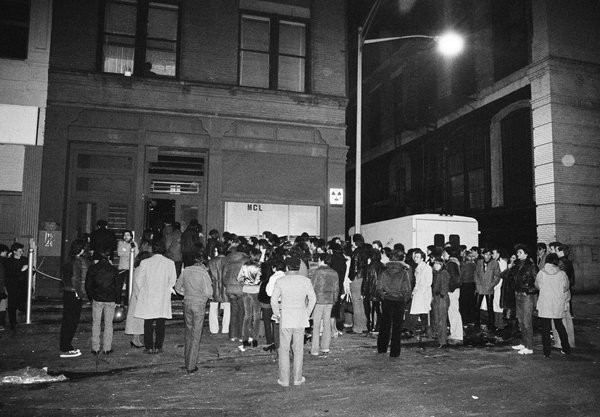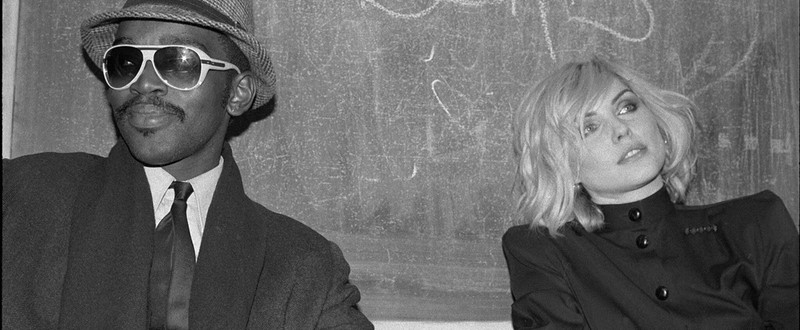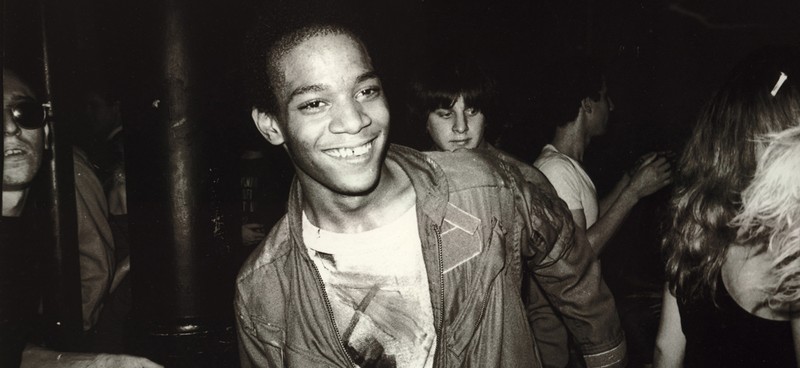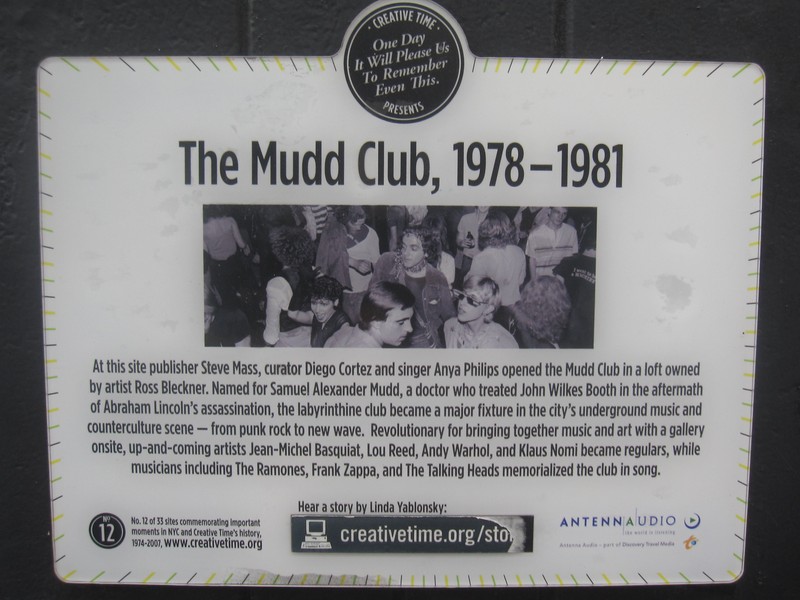The Mudd Club (1978-1981)
Introduction
Text-to-speech Audio
Images
Waiting to get in the Mudd Club

Fab 5 Freddy and Blondie at the Mudd Club

Jean-Michel Basquiat at the Mudd Club

Plaque outside the former club

Backstory and Context
Text-to-speech Audio
If CBGB was grungy and gritty, and Studio 54 was all glitz and glitter, the Mudd Club was the artier, more avant garde alternative to both of them. The club, which was named for the doctor who treated an injured John Wilkes Booth following the Lincoln assassination, opened on Halloween of 1978. It was the work of Steve Maas, art curator Diego Cortez, and Anya Phillips, who was part of the city's underground film scene. The trio managed to open the club with a budget of just $15,000.
At the time of the club's opening, its location below Canal Street meant that it was in something of a no-man's land. The area would eventually become gentrified and overpriced, but in the 1970s, it was one of Manhattan's grittier enclaves. (The building sits at the corner of White Street and Courtlandt Alley, which is often used in television and movies as a sort of archetypal dank, rusting New York City alley.)
From the beginning, the Mudd Club defied the velvet-rope elitism of Studio 54 and other uptown nightspots. There were celebrities aplenty there, but patrons were just as likely to encounter art school students as they were Lou Reed and Andy Warhol. In fact, the club's former doorman recalled being told to turn certain celebrities away. Unlike some of its uptown counterparts, the Mudd Club had a decidedly egalitarian ethos.
The club quickly developed a reputation for bacchanlian goings-on and an anything-goes environment. People magazine opined that "for sheer kinkiness, there has been nothing like it since the cabaret scene in 1920s Berlin." It's themed parties--such as the Puberty Ball and the Joan Crawford Mother's Day Celebration, complete with revelers made up as abused children--were legendary.
From the club's opening night, when the B-52s performed, the Mudd Club spotlighted some of the biggest musicians of the era, including the Psychedelic Furs, the Talking Heads, U2, and Judas Priest. But the Mudd Club wasn't just about music--it celebrated all of the arts, and its regulars included Jean-Michel Basquiat, Anna Sui, Madonna, Debbie Harry, Andy Warhol, and David Bowie, to name just a few.
The club closed in 1983 after only five years, its popularity as the place to be in downtown having run its course. The neighborhood, once desolate after dark, is now home to million dollar condos. The building which once housed one of the city's most raucous clubs is now home to loft apartments, with a plaque on its exterior the only reminder of the Mudd Club.
Cite This Entry
Woodham, Rebecca and Clio Admin. "The Mudd Club (1978-1981)." Clio: Your Guide to History. September 7, 2020. Accessed March 27, 2025. https://theclio.com/entry/114082
Sources
Blanks, Tim. Mudd Quake, New York Times . February 25th 2001. Accessed September 6th 2020. https://archive.nytimes.com/www.nytimes.com/library/magazine/specials/20010225mag-muddquake.html.
Lowe, Scott . Remembering the Mudd Club , Alt 923. July 24th 2020. Accessed September 6th 2020. https://alt923.radio.com/blogs/postmodern-with-scott-lowe/remembering-the-mudd-club.
Slesin, Suzanne . Making the Scene at the Mudd Club , New York Times . April 21st 1979. Accessed September 6th 2020. https://www.nytimes.com/1979/04/21/archives/making-the-scene-at-the-mudd-club-dancing-with-a-zucchini-its-a.html?searchResultPosition=2.
Cooper , Sabrina . A Historical Look at the Mudd Club , November 15th 2018. Accessed September 6th 2020. https://www.crfashionbook.com/culture/a24889980/a-historical-look-at-the-mudd-club/.
Kurutz, Steven . The Doorman at the Mudd Club Tells All , New York Times . August 25th 2017. Accessed September 6th 2020. https://www.nytimes.com/2017/08/25/style/mudd-club-doorman-bowie-basquiat.html.

